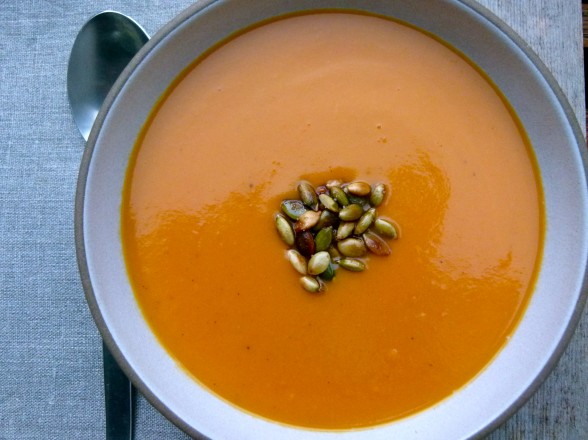
I make a lot of soups and stews for the family, especially from September through May. I know many of you have been freezing your buns off on the East Coast and Midwest lately and are likely craving a bowl of steamy, thick, rich soup to warm your body and soul. I love all types of soups from brothy to substantial and hearty, but I always try to keep them nutritious and clean. Fortunately, I have learned a few tricks for making soups and stews richer or creamier without using the old-fashioned techniques of a roux, heavy cream, flour or cornstarch. Actually, my mom taught me to thicken my stews by mashing softened butter with equal parts all-purpose flour and stir that in the pot towards the end of cooking which works just fine, but these days many people are dairy and/or gluten-intolerant or looking to save a few calories wherever possible without sacrificing flavor and nutrition. Why add unnecessary fat, non-nutritive calories, and/or hard-to-digest ingredients if you can achieve the same result more naturally?
Here are my favorite tricks for thickening soups and stews:
pureeing cooked vegetables and stock — this is the method I use most often. I like to take a cup of vegetables and stock (leave any pieces of animal protein in the pot) from the cooked soup and blend them in a blender or mini food processor and then add it back to the pot.
white beans — cooked Cannellini or Great Northern beans have a bland, neutral flavor and fantastic creaminess when they are pureed. Take a can of beans with a cup of hot stock from the soup and blend together until smooth, then add back to pot. Or cook beans with soup and puree the entire soup, beans included. Beans add great fiber and protein, as well! I love this recipe for Potato and White Bean Soup and this post for how to cook your beans from scratch. Otherwise, Eden is my favorite BPA-free, organic brand.
Yukon Gold potatoes — potatoes add a lovely richness and neutral flavor to soups, especially if you can puree some or all of them. Use same technique above, either cook potatoes separately, puree with hot stock and add to the soup or cook potatoes with the soup and puree in the pot. The Yukon Gold variety has a nice buttery flavor and you get the benefits of a whole food. Check out Potato and White Bean Soup, as well as Cauliflower and Roasted Garlic Soup.
rolled oats — sounds weird, I know. But if you plan on a pureed soup, you won’t detect any oatmeal. The rolled oats not only thicken the soup and add great fiber, but add an amazing silkiness. I use rolled oats in my Puree of Asparagus Soup which I can post this Spring. Several manufacturers sell gluten-free rolled oats, such as Bob’s Red Mill
coconut milk instead of cream — okay, you won’t be saving many calories using coconut milk, but I am a huge fan of unrefined coconut products and their myriad health benefits. And generally speaking unrefined coconut products are easier to digest than pasteurized cow dairy. I love coconut milk in my Sweet Potato Soup, Chicken Tikka Masala, Thai Coconut Chicken Soup (to be posted soon!), as well as any soups with winter squash. It’s so smooth and rich with a subtle sweetness and it won’t make your soup taste like a piña colada — promise! My favorite brand is Native Forest which supposedly doesn’t contain BPA in their can liners.
ground nuts, like almonds or cashews — I’ve seen this in some Spanish or North African soups. The nuts add some high quality protein, as well. I use cashew butter or ground cashews in my Chicken and Vegetable Curry.
immersion blender — sure you can puree with a standard blender, but you have to do it in batches and veeerrrry carefully so that you don’t create a heat explosion. Then you need to pour the puree into another container and puree what’s left in the pot. Too much work for me and I don’t love the extra dishwashing involved. Stick an immersion blender directly in the pot and puree as much or as little as you like. Rinse the immersion blender in the sink and put it away. I have the Breville immersion blender which I love, but some of my students bought the Cusinart which they think is great.
What are your tried and true methods of thickening soups?


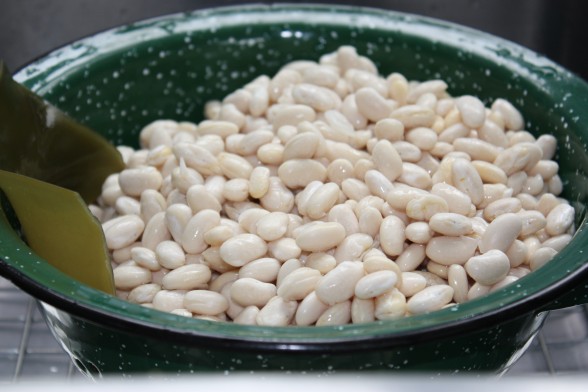
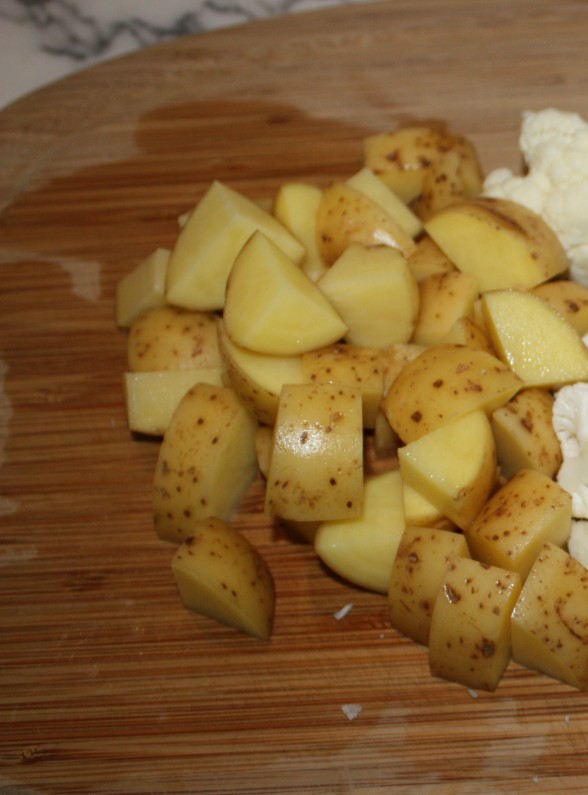
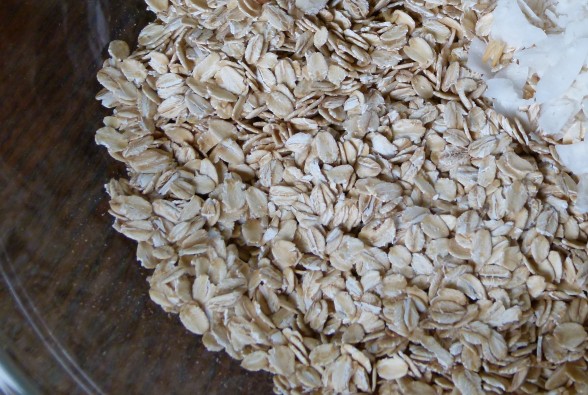
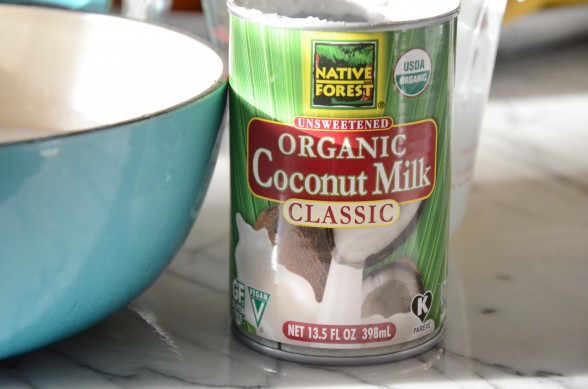
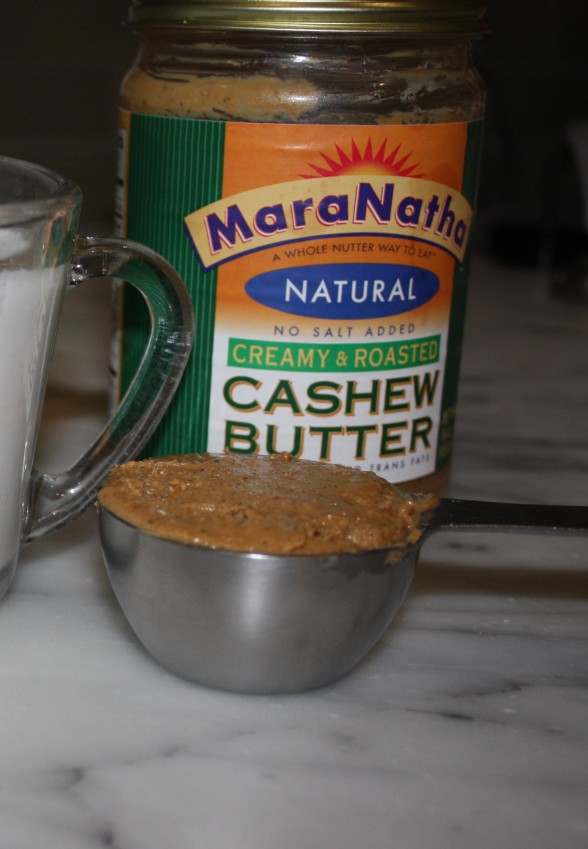
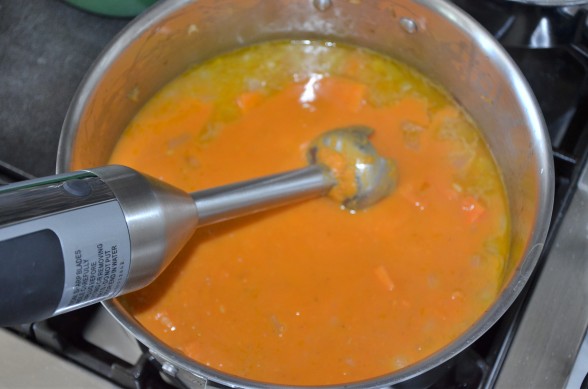

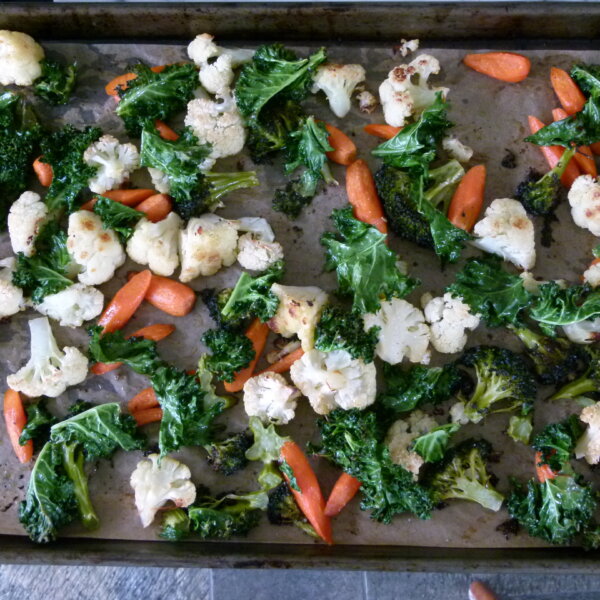

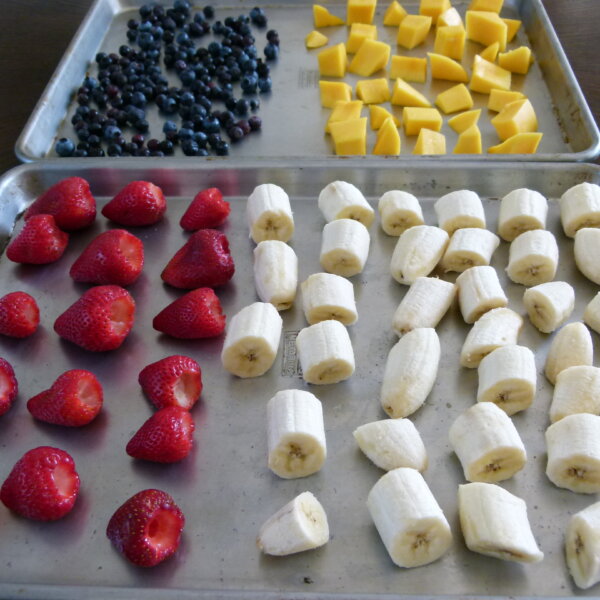





To a pot of stew how much oatmeal to thichen it? And is that raw or cooked? If raw, when do i add and how if at the end, how much longer do it cook ?
I have only used oats to thicken a soup that is pureed, otherwise you’ll see the oats.
I simmer my porridge for 15 minutes to make it thick. If it gets too hot it appears runny but thickens as it cools. I will use this as a guide when I experiment with stew.
Very true!
I think butter(fat) and flour are the main ingriedients in a roux…tho?
Yes! My point was that my mom taught me to use a roux, but I’ve learned other ways to thicken soups and stews that don’t involve butter or flour. 🙂
I roast a neutral flavoured squash , purée in food processor and freeze in small ziplock snack bags. I add 1 tablespoon to 1/4 to almost everything stew-y, saucy and soupy. No one notices. I find it sweetens so I don’t need to use sugar.
GENIUS!
can I cook my already made cucumber soup to thicken it by reducing it. it is very thin. a white roux w/butter for flavor is what I was thinking about..thanks
Is the cucumber soup a cooked soup or raw/cold soup? If it’s cooked, yes you can thicken by reducing it.
I use peeled raw cucumber as a thickener both in cold gasp ache as well as in beef stews with root vegetables & greens. I add the cucumber in the last hour and a half of Crock pot cooking. I begin with cooking marrow of of bones (12 hours) and screening off the top layer of fat.
Thanks for sharing!
Hello Pamela,
Thanks for these tips! I live in the Middle East now and find it difficult to obtain certain ingredients, could you share a recipe for making my own cashew butter? Thanks for your help
If you have a food processor, it’s as simple as taking raw cashews and processing them until they turn into butter!! You can use toasted, but that has more of a nutty flavor than raw, which is almost flavorless. 🙂